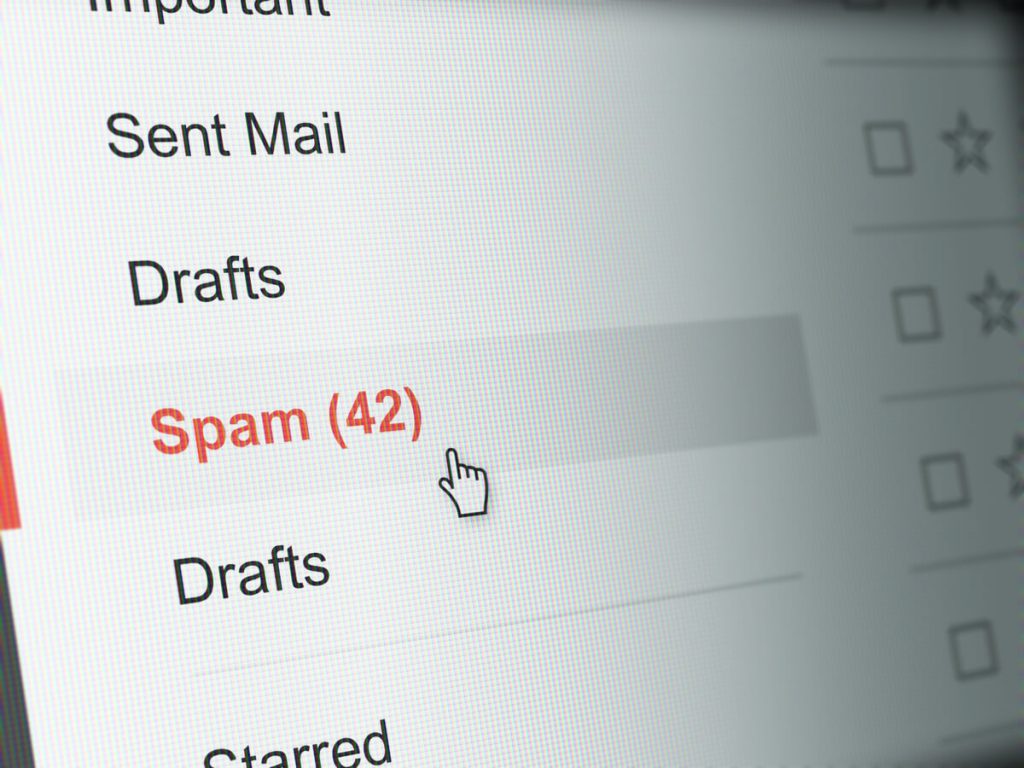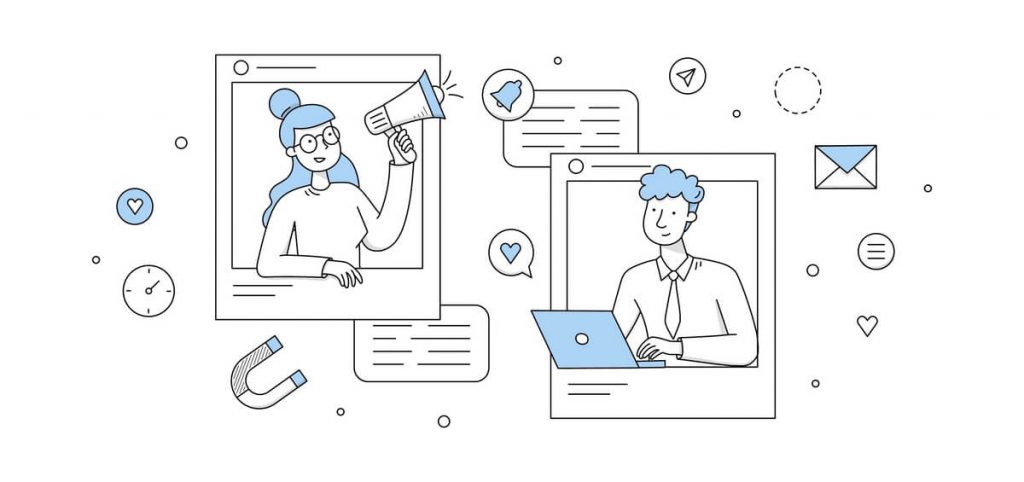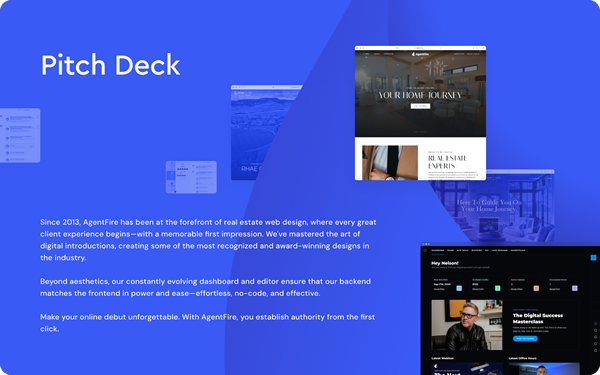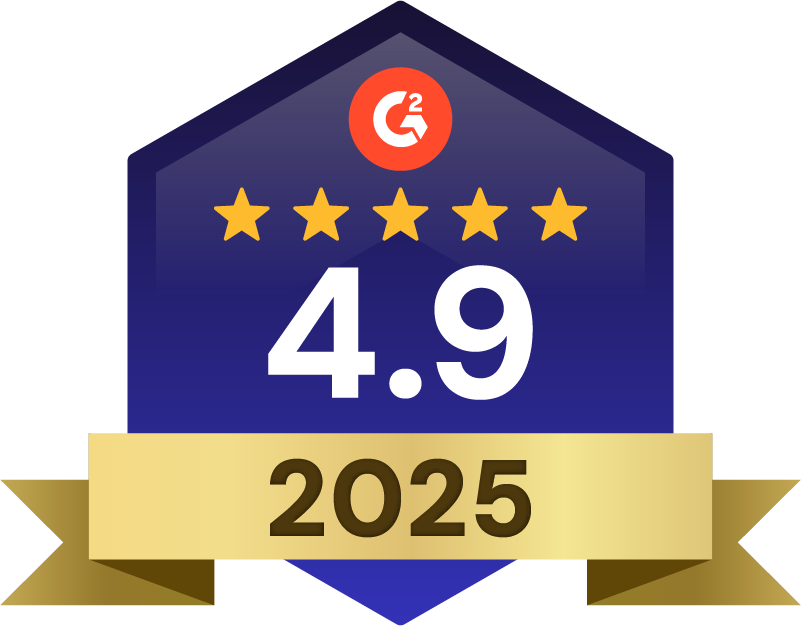Find out if cold emailing real estate listing leads is right for you, and learn how to generate leads effectively and legally under the CAN-SPAM Act.
Email Marketing Lead Generation
It’s safe to say that cold emails are not every real estate agent’s favorite lead-generating technique. Cold emails for real estate can often end up being a waste of time and effort with little valuable ROI to show for it. However, with the right techniques and focus, a cold email can score tons of hot leads with minimal effort. Although it can be tricky, your cold email could be the beginning of a beautiful client relationship.

Why Use Cold Emails?
It’s simple: the ROI for a successful cold email is second to none. On average the ROI on a client’s cold emails is 38 to one. As long as you have a CRM (client relationship manager) set up and an email blasting service, such as Mailchimp, cold emailing costs next to nothing and can be used to target a specific, dynamic target audience.
Unfortunately, cold calling has gotten a bad reputation over the years as many emails are marked as spam or sent to junk mail quicker than you can say unsubscribed.
To make sure your email is the one that lands in the “important” folder and is ready entirely, follow these steps and enjoy the leads that roll in!
Find Your Lead Pool
The first step to a killer cold email is knowing who to email in the first place. Agents commonly gather cold leads from open houses, hyper-local cold calls, social media finds, referrals, or contact forms on your website. As you gather potential leads, you’ll want to save contact details in your CRM. AgentFire websites easily integrate with every major CRM, so you can easily organize new contacts gathered from your website.
When you’re collecting information for potential cold leads, collect their basic contact information (full name, email, phone number, and social media profiles as possible) as well as information about:
- Whether they are buyers vs sellers
- If they are downsizing vs upsizing their home
- Are they experienced home buyers or first-timers.
The better you understand your prospective clients, the more targeted your emails will be and the more likely they are to respond positively when you reach out over email.

Get out of the Junk Box
The Can Spam Act
Most people don’t know this, but there are actually strict laws around email spam. The Can Spam act breaks down every legal concern you may have about sending and receiving commercial emails that could potentially be flagged as spam.
The main points of the Can Spam Act can be summarized in the following points. Visit the Can Spam website for more details.
- Don’t use false or misleading information
- Stay away from deceptive subject lines
- Identify the message as an ad
- Tell the recipients where you are located (postal address included)
- Make it easy to unsubscribe from your emails
- Honor opt-out requests quickly
- If another company is handling your marketing, keep a close eye on them
Legitimate Email Addresses
The biggest rookie mistake when it comes to ending up in the spam box is using an unofficial or suspicious email address. In fact, 43% of email users regularly skim their email inboxes and delete things they consider to be spam immediately. As a real estate agent, you likely spend most of your time working on your own and may occasionally use your personal email address. Unfortunately, sending a bulk email from a personal address is nearly guaranteed to end up in the spam box. Use a business email address when sending a cold email and email servers will take you more professionally – but don’t leave out a personal touch. Emails servers and readers prefer the best of both worlds; a professional email domain with a personal email address. Try this formula: (Yourname)@(brokerage’sname). com.
However, make sure this email address isn’t brand new. Spam filters often target brand new email addresses that send out large quantities of emails right away. If you’ve just opened your business email account, start by sending smaller batches of emails and slowly increase the size. For example, you may want to send 20 emails one week, followed by 40, 60, and so on, until the first round your cold email campaign has been sent out.
Spam Triggers
Specific words (although relevant and professional at times) can be flagged as typically used in spam, and trigger an action that sends the email directly to the junk folder. Take a look at the extensive list of relevant spam triggers for real estate here. These words are better kept out of your initial cold email, although they are safer to use in follow-up emails. Once you’ve started an email thread with a prospective client, your emails are significantly less likely to be sent to junk mail automatically.
Email and Spam Checkers
Certain websites and software will offer a service that reports how likely your email is to be marked as spam. Send a copy of your email to a test email address, and you’ll be given a score and advice to improve your email copy. Unspam and Mail Tester are two of the most popular email validating tools at the moment.
Spam checkers will run your email content through SPF, DKIM, and DMARC records. Records are a set of email authentication methods that are used to prove to ISPs and mail services that email senders are truly authorized to send email from a specific domain.

Creating your Email Campaign
Now on to the meaty part: creating your own cold email! Needless to say, the actual content of your email and how well it connects with the reader is what will determine your success in gathering hot leads. Let’s take a look at how to perfect each piece of email content and get your cold real estate email in front of the right eyes.
Setting Your Intention
Make sure that you are clear on the intent of the email before taking any other action. For example, are you looking to expand your network? Learn more about interested home buyers/sellers in a particular hyperlocal area? Just make sure you’re not immediately pushing a sale. You don’t have much time to catch a reader’s eye when you are a new guest in their inbox, so each part of your first cold email should be carefully crafted with friendly, direct, and to-the-point language. With your intention clarified, you can regularly refer to it as you write the email to make sure that you are staying on track and not getting too ‘wordy’ or off topic.
The Email Subject Line
Subject Line Building Blocks
Think of your email headline as your opening act: it sets the tone for what to come and if readers aren’t interested, they’ll walk right out of the theatre. Hubspot recommends keeping headlines to 50 characters or less. If you mention the name of the recipient in this subject line, the chances of opening your email are significantly higher.
Other qualities that make your email stand out are targeted language and action-oriented words. Readers won’t be motivated to read your email if you don’t sound motivated while writing it. For example, exchange ‘help’ for ‘advocate’, or ‘change’ for ‘transform’. Phrasing these words in a way that models a CTA (call to action) or a question, creates even more interest in the reader.
Numbers and statistics break up the pattern of text on the mobile or computer screen and tend to jump out at the reader. If you have relevant information that can be expressed in numbers, do so.
Finally, think about how you received that person’s contact information. People often forget filling out contact forms or signing up for lead magnets and they may not initially recognize your email address or mistake it for junk. In that case, try a headline that reveals their connection to your business. E.g. “ (Client name), Here’s the (city name) guide that you requested.”
Click the button below to learn more about pricing.
A/B Testing
A/B testing involves testing different versions of your email subject line until you find one that gives the highest open rates. You’ll want to split test email subject lines within each of your email segments. Simply put, let’s imagine you are sending a networking email in the hopes of connecting with potential clients looking for single-family homes or bachelor condos. You’d want to create two subject lines for each segment (relating to family homes and bachelor condos respectively), then select a small pool of potential recipients from each segment audience, divide them each into halves, then test the two subject lines with each half. The subject lines with the highest open rates for family homes and the subject line with the highest open rate for bachelor pads will be used to market to the rest of the recipients in each respective segment.
Sending Times
Choosing the right time to send your email is a topic that is often over-analyzed and stressed. To start, simply think about the lifestyles of your clients and when they are likely to check their emails. Young professionals may check their personal email first thing in the morning while families may check at the end of the day after the kids have gone to bed. Play around a bit with email sending times and select the best option based on open rates.
The Email Body
The body of your emails should be no longer than three short paragraphs – and get straight to the point. This doesn’t mean that you can’t be clever or charming. It takes one second for a client to recognize that an email (no matter how relevant) is too long or text-heavy to enjoy reading.
Make your reason for contacting them, the way you gathered their information, and what you can do for them, clear in the first two sentences of your email.
In the middle and end of the email is where you can link to other online resources written by you or information they may be interested in such as blogs and useful informative guides/tools.
Finally, finish with a simple and straightforward call to action – and we mean simple. You could simply remind clients to reply or refer them to your social profile, the list is extensive. Just keep it to one sentence.
Follow Up Emails
Let’s assume you’ve followed all of the advice above and still don’t hear back from your prospective client. Not all hope is lost! Some clients just need an extra reminder or two before they take action. The purpose of a follow-up email is to get back on your client’s radar instead of being forgotten or tucked away in a stream of spammy emails. It’s crucial to stay consistent with your follows ups. At least 2-3 follow-up emails over the following two weeks after the initial email is sent are usually effective and will finally get you the action you’re looking for.
Cold Email Template Example
Every cold email should be specific to your potential client or at least the specific segmented audience that you’re targeting.
Here’s an example of what an initial cold email could look like for readers who have signed up for a specific seller-oriented lead magnet on your real estate website:
The Initial Cold Email
Subject line: {Client name}, Here’s the {hyper-local lead magnet name} that you requested.
Hello {Prospect’s Name},
Thanks for signing up for the {insert hyper-local lead magnet name}. Download it here {insert link}.
I’ve sold a number of houses in {Hyperlocal area] in an average of X days for [X%] over asking price. Check out some of our most recently sold properties on our website {insert link}.
Are you thinking about listing? Book a quick virtual meeting or phone call with me here {insert link to scheduling webpage} to discuss the current market and your options.
Regards,
{Your Name}
The Follow-up Email
Your new leads may not get back to you after your initial email, but that’s not a problem. Gently remind them that you are still available if needed and offer tons of value while you’re at it.
Subject line: {Client name}, Have you found your dream home yet?
Hello {Prospect’s Name},
Have you seen any homes you would like to tour in {Insert hyperlocal area}?
Here are a few listings that may interest you {Insert link to home search page}.
If your search preferences have changed, that’s not a problem.
Reply to this email and I will change your search preferences for you or contact us here {insert contact information or link to contact page} to get started on the search for your perfect home.
I’m looking forward to learning more about how I can help you find exactly what you’re looking for.
Regards,
{Your Name}
Conclusion…
Cold emails are not as tricky or uninspiring as they seem. In fact, sending a cold email is one of your most cost-effective lead-generating strategies if used with intent and applied knowledge . It starts with finding the right audience, understanding how the junk box works, and making small changes to stay out of it.
A word of advice before sending your first cold email for real estate: send yourself a test email and review the pointers in this article. Does your email meet all of the recommended practices set out here? Then it’s time to send!








